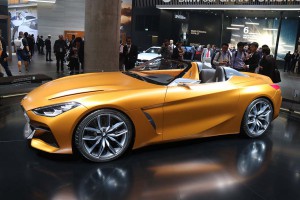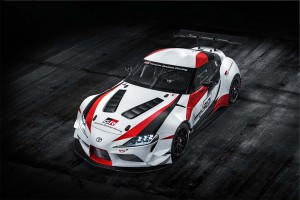Magna Steyr has received the contract to build the new sports cars developed jointly by BMW and Toyota.
Magna has confirmed its that it has signed a contract with BMW and Toyota to produce the new BMW Z4/Toyota Supra starting at the end of 2018. It said that production of the new BMW Z4 and Toyota Supra will be added to its production line in Graz, Austria, after upgrades to the production line are complete.
Although, the production levels for the Z4/Supra are expected to be relatively modest the added output will further drive Magna to reach its production capacity of 200,000 units in early 2019, analysts said.
Consequently, BMI, the research arm of Fitch rating services, said it was revising its forecast for Austria’s passenger vehicle production growth for 2018 and 2019 from our current forecasts of 120% and 9.0% respectively to 125% and 14%, to reflect our expectation that Magna’s output will reach its full capacity in early 2019.
(Official: First look at all-new BMW 8-Series. Click Here for the story.)

The new BMW Z4 will be based off this concept and built on Magna's production line with the Toyota Supra.
The new business will bolster Magna’s position as the world’s leading brand-independent vehicle contract manufacturer. “Our expertise in complete vehicle engineering and production makes us unique and ideal partner for the industry,” said Gunther Aplfater, president of Magna Europe and Magna Steyr.
Both BMW’s roadster and Toyota’s coupe are expected to be built in at the same plant where the Mercedes-Benz G-Wagen sport-utility vehicle has been built since 1979. More recently, Magna Steyr began building the BMW 5-Series and the Jaguar E-Pace. It is also preparing to launch production of the electric Jaguar I-Pace.
(Click Here for a first look at the all-new BMW X5.)
Both the next-generation Z4 and Supra have attracted a lot interest among enthusiasts. The Supra in particular as it was discontinued more than a decade ago and its return to the Toyota line-up has long been rumored but never materialized until now.
Toyota revealed the GR Supra Racing concept vehicle for the first time in Geneva Motor Show back in March and Toyota executives indicated that the concept vehicles “shows the future potential for a car that can deliver high performance both on road and track.”
Supra traces its heritage back to 1978 when it debuted as a special version of the second-generation Celica.
(To see more about Toyota’s new track-bound Supra, Click Here.)
The Supra later became its own model. Toyota continued making the Supra in a front-engine, rear-wheel-drive format until its demise in 2002.

